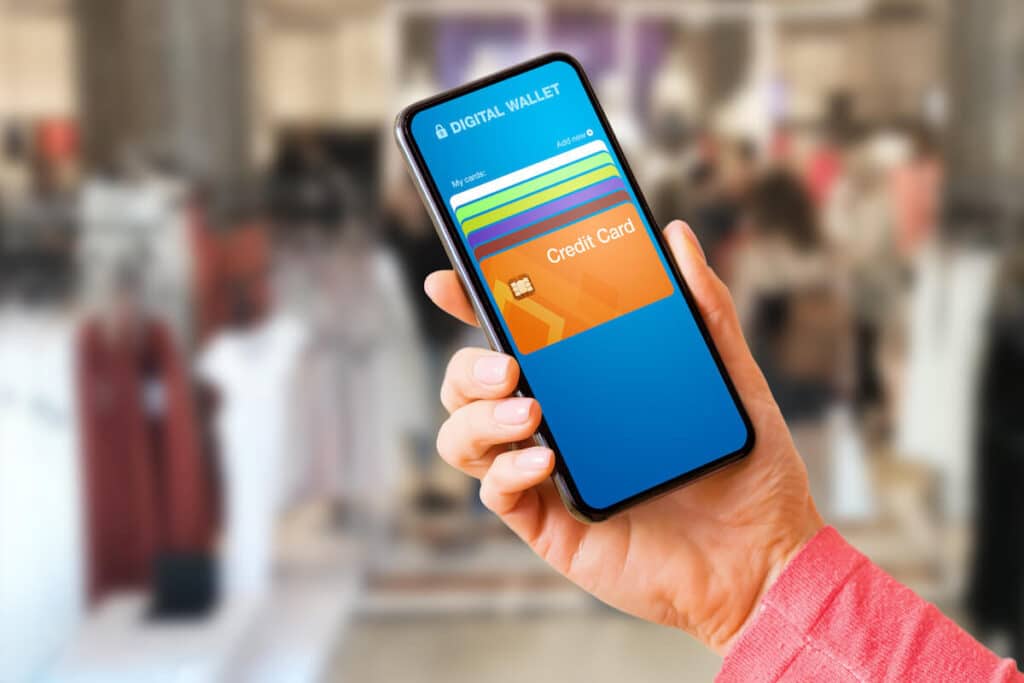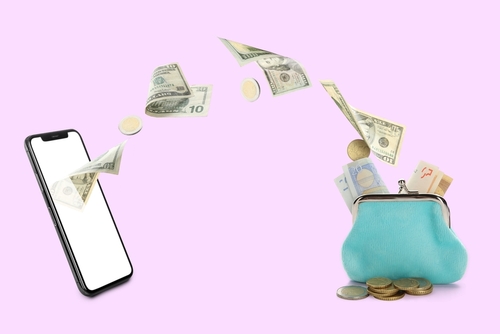Sending money to loved ones is something many of us do without a second thought, whether it’s to help parents back home, cover a friend’s rent, or chip in for family emergencies. But things get a little trickier when the person you’re trying to help doesn’t have a bank account.
At Remitly, we understand that life doesn’t wait for proper paperwork or access to banking. No matter the reason, being unbanked shouldn’t mean being left behind. So, we’ve put together this guide to help you find the best way to send money to someone without a bank account safely, affordably, and with peace of mind.
Why don’t some people have bank accounts?
According to recent data from the Federal Deposit Insurance Corporation (FDIC), approximately 4.2% of US households—roughly 5.6 million families—don’t have a bank account. Globally, the World Bank estimates that about 1.4 billion adults are unbanked. Some choose it that way, but others face barriers like high fees, documentation issues, or limited access to banking services.
Financial and identification barriers
For many people, banks just aren’t accessible. Some require minimum balances that are tough to maintain. Others charge overdraft or monthly fees that eat into already tight budgets.
Then there’s the paperwork. Opening an account often requires providing documentation like a Social Security number, proof of address, or a government-issued ID, which not everyone has, especially newcomers still settling into life in the US. Even in cases where an ITIN is accepted, many immigrants are unaware that it’s an option.
It’s easy to see why someone might skip the hassle and just stick to cash, prepaid cards, or trusted transfer services that don’t require so many steps.
Limited access and technology challenges
Similarly, banking services aren’t readily available in many places around the world, especially in areas far from cities or in naturally isolated zones. Rural towns might only have one bank branch miles away, and for people who work long or unpredictable hours, like caregivers, delivery drivers, and service workers, getting there during business hours isn’t always possible.
Technology can also be a barrier. Not everyone has reliable internet, a smartphone, or feels confident using financial apps. And even when they do, there’s often a worry about data privacy and scams.
Cultural, language, and trust factors
Money is deeply personal, and trust doesn’t happen overnight. Some people have had bad experiences with banks, such as unexpected fees, frozen accounts, or policies that feel unfair. Others come from countries where banks aren’t reliable or community savings systems are the norm.
Language barriers can make things even harder. Most banking forms and customer support lines are only in English, which can be intimidating if it’s not your first language. So it’s no surprise that many immigrants feel more comfortable using cash pickup or money transfer services that are straightforward and available in multiple languages.
Personal preference and privacy
And sometimes, it just comes down to choice. Some people prefer managing their money themselves without digital records or waiting on hold. Others like the freedom of using prepaid cards or cash to stay in control of how and when they spend.
Fortunately, there are so many safe and flexible ways to send and receive money nowadays that everyone can stay connected and supported, no bank required.
Cash pickup services

When you need to send money quickly, cash pickup services are one of the most popular and reliable choices.
How cash pickup works
Services like Remitly make it simple. You send the money online, through an app, or in person via an agent, and the unbanked recipient collects it from a nearby partner location within a few minutes. All you need is a valid ID and the transaction reference number.
For many immigrants, this method feels familiar. It’s commonly used across Latin America, Africa, and Asia. Plus, it’s perfect for emergencies or when you want the money to arrive fast.
Fees and delivery time
Fees usually vary depending on the amount, country, and whether it’s a domestic or international transfer. Transfers are typically ready within minutes, and many pickup locations include supermarkets or pharmacies. So it’s easy for unbanked recipients to collect money close to home.
Mobile wallet transfers

If the person you’re sending money to has a smartphone, then you might want to opt for mobile wallets. They’re one of the most convenient and modern options.
How mobile wallets work
Apps like Venmo and Cash App, or international platforms like GCash and M-Pesa, let people send, store, and spend money digitally. Once the funds arrive, recipients can access and use them immediately for shopping, paying bills, or even withdrawing cash at certain ATMs or retail partners.
For example, if you send money to your family abroad through Remitly, they can receive it straight into their mobile wallet within minutes, avoiding any long waits.
Fees and verification
Transfers within the US are typically free, but some instant or international payments might incur small fees. The person you’re sending money to may need to verify their identity for higher limits. It’s also recommended to switch on two-factor authentication to keep both sides protected and add an extra layer of peace of mind.
Prepaid debit cards

Prepaid debit cards are a great alternative for someone who doesn’t have a bank account but wants the flexibility to shop, pay bills, or withdraw cash.
How prepaid cards help unbanked users
You can buy a prepaid card online or at a local store and load it with money at any time. Once you’ve added money, the card works anywhere Visa or Mastercard is accepted, just like a regular debit card.
If you send money often, a reloadable card is your best option. With it, you can add funds whenever you need and easily support loved ones regularly. And unlike handing over cash, if a card is lost or stolen, most issuers offer replacements and balance protection, which is a huge advantage for safety.
Choosing the right card
The average cost of a prepaid card is around $3–$7 USD or even less, and reload fees are typically small. It’s always a good idea to check that your card provider is reputable and clearly lists fees before you buy. For added convenience, most prepaid cards give you the option to link them to digital wallets or use them for online shopping.
Money orders

Sometimes, the simplest methods are still the most dependable. Money orders have been around for decades, and for good reason.
How to send a money order
You can buy a money order at your local post office, bank, or retailer like Walmart. You’ll need to fill in your recipient’s name, pay the amount plus a small fee, and send it by mail or hand-deliver it.
The person you’re sending money to can cash it at most post offices or financial centers. It’s old school but reliable, and a great option if you prefer something tangible.
Why do people still use money orders?
Money orders create a clear paper trail, which makes them ideal for rent payments or personal transfers that require proof. They can’t bounce, and since they’re prepaid, they’re a safe way to send guaranteed funds.
Online transfer services with cash pickup

If you want the ease of digital transactions but your recipient prefers cash, online money transfer services are the perfect mix.
Combining convenience and access
Platforms like Remitly let you send money from your phone or computer, while your friend or relative collects it in person. This option works well for international transfers as it’s fast, easy, and secure.
Online services usually offer lower fees and better exchange rates than traditional banks. You can also track your transfer in real time, so you’ll know exactly when it’s collected. Transparency and speed make this one of the most trusted ways to send money globally.
Peer-to-peer payment apps

For smaller domestic transfers, peer-to-peer (P2P) apps like Venmo or Cash App are quick and easy to use.
Everyday transfers made easy
With this option, you can send money instantly. Your recipient can spend it directly through the app or use an app-linked debit card to withdraw cash. It’s perfect for sharing rent, splitting bills with friends, or sending quick help to someone nearby.
Unverified users may have limits typically ranging from $500–$2,000 USD per day. Remember to only use official apps, avoid fake links, and confirm usernames carefully. Once both sender and receiver are verified, these apps can be one of the easiest ways to share funds.
Digital wallets and cryptocurrency

Digital wallets and cryptocurrencies are newer ways to move money, but they’re becoming more popular, especially among tech-savvy users.
How digital wallets work
Digital wallets let you store money online and spend it digitally, or sometimes even withdraw it through linked cards. It’s a flexible option for people who want fast, app-based transactions. Some wallets allow you to top up your balance directly from a credit or debit card and use the funds right away.
Exploring cryptocurrency transfers
Crypto options allow direct peer-to-peer transfers that skip traditional banking altogether. While crypto can move quickly and cost less in fees, prices can change fast, so it’s best for people who understand the risks and use secure platforms.
How to stay safe when sending money without a bank account
Security is everything when it comes to money transfers. A few smart habits can protect both you and the person you’re sending money to.
- Use licensed, regulated services like Remitly that comply with international safety standards.
- Double-check recipient details before sending to ensure everything matches their ID details.
- Avoid public Wi-Fi when making transfers or entering personal info.
- Keep your receipts and reference numbers, in case you need them for tracking transactions or asking for refunds.
- Be cautious with unfamiliar requests. If something feels off, take a moment and verify.
- Trust your instincts and use services that put your safety first.
Choosing the right method
The best method depends on where you’re sending money, how fast it’s needed, and what’s most convenient for your recipient.
If you’re sending within the US, apps, mobile wallets, or money orders are often the simplest options. For international transfers, regulated providers like Remitly are designed for cross-border payments that are safe and fast.
Cash pickup is perfect for people who prefer cash in hand, while prepaid cards offer flexibility for regular support. The right choice is the one that fits your recipient’s lifestyle and gives you both peace of mind.
Send money confidently
Not having a bank account shouldn’t stop anyone from staying connected or supported. Whether it’s across town or across borders, there’s always a way to help safely and quickly. With Remitly, you can send money confidently, knowing it’ll arrive fast, securely, and with full transparency.
FAQs
Is it safe to send money to someone without a bank account?
Yes. Reputable services like Remitly follow strict safety standards and encrypt your data.
What ID does my recipient need?
Usually, a government-issued ID and the reference number from your transaction are enough to receive and access funds.
Can I track my transfer?
Yes. Services like Remitly send updates every step of the way.
What if the recipient can’t pick it up?
Most services refund your money if the funds go unclaimed.
Are there sending limits?
Unverified accounts usually cap at $500–$2,000 USD a day, but limits increase with ID verification.

